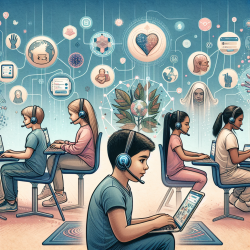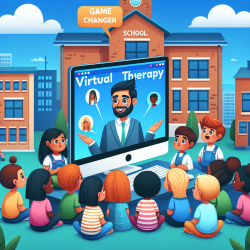Introduction
In recent years, the integration of technology into healthcare has opened up new avenues for managing chronic conditions. A groundbreaking study titled "Data visualization as an intervention for pediatric chronic pain: a pilot feasibility study protocol for a randomized controlled crossover trial" explores the potential of data visualization as a therapeutic intervention for children suffering from chronic pain. This study is particularly relevant for practitioners in the field of speech-language pathology and online therapy services like TinyEYE, which are focused on creating data-driven, effective outcomes for children.
The Study Overview
The study investigates the feasibility and acceptability of using a data visualization platform to track and monitor symptoms of chronic pain in youth aged 12-18 years. By utilizing Ecological Momentary Assessment (EMA) via smartphones, the study aims to provide real-time insights into how pain interacts with other factors such as sleep, emotions, and social interactions. The randomized controlled crossover trial involves 50 participants who experience chronic pain, engaging them in two phases of data collection: one with EMA alone and another with EMA plus a visualization platform.
Key Findings and Implications
The study's preliminary findings suggest that data visualization can significantly enhance the understanding and management of chronic pain in children. Here are some key takeaways for practitioners:
- Enhanced Self-Management: By visualizing their pain data, children can better understand their symptoms and how they relate to other daily activities and emotions. This empowers them to take an active role in managing their condition.
- Improved Communication: Data visualization provides a common language for children, parents, and healthcare providers, facilitating more effective communication about the child's pain experience.
- Feasibility and Acceptability: The study reports high acceptability and feasibility of the data visualization platform among participants, indicating its potential for broader application in clinical settings.
Applications for Practitioners
For practitioners at TinyEYE and similar organizations, integrating data visualization into therapeutic practices could revolutionize how chronic pain is managed in pediatric populations. Here are some steps to consider:
- Explore Technological Tools: Investigate available data visualization tools and platforms that can be integrated into your practice to support chronic pain management.
- Train Staff: Ensure that therapists and other staff members are trained in using these tools effectively, emphasizing the importance of data-driven decision-making.
- Engage Patients and Families: Educate children and their families about the benefits of data visualization, encouraging them to actively participate in tracking and managing symptoms.
Encouraging Further Research
While the pilot study provides promising results, further research is necessary to fully understand the potential of data visualization in managing pediatric chronic pain. Practitioners are encouraged to contribute to this growing field by conducting additional studies and sharing findings with the broader healthcare community.
To read the original research paper, please follow this link: Data visualization as an intervention for pediatric chronic pain: a pilot feasibility study protocol for a randomized controlled crossover trial.










